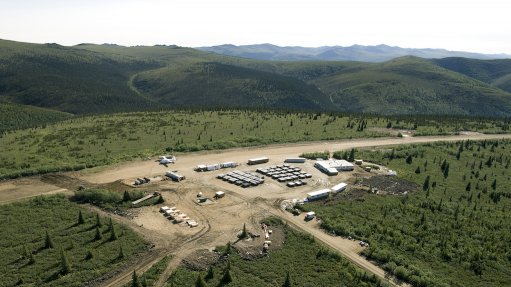Ensuring disruptions do not turn into crises
There are two things that link mining companies the world over – their safety record and their profit levels. Given that the manner in which a mine continues business during any form of disruption is one of the connecting factors between safety and profit, it is often surprising to see how little attention is paid to this matter in the mining sector.
To ensure it maintains healthy profits and safety records, a mining company needs to understand the nature of those impacts, and how it will continue operating when they occur.
In this article, I try to point out the ‘best practices’ of business continuity and crisis management that a mining company may consider adopting. These principles are based on ISO 22301, a business continuity standard.
A well-defined scope enables a mine to allocate resources effectively. This step frames and shapes all later work and enables the management team to correctly apportion responsibility to the relevant departments.
Understand Your Organisation, Identify Your Critical Activities
At strategic level, take time to appreciate the changing environment in which you operate. Your orebody may have a 40-year-plus life span but, during that time, many factors change. Host-nation politics change, taxes increase and new resource discoveries attract more players into the market. At the most senior management level, you should identify and understand the impact of all these changes and plan for them. Preparing for these eventualities improves your ability to respond when disruptions occur. To fully understand your business risks and the impact disruptions may cause, consult your site risk register and conducted a business- impact analysis.
Business-Impact Analysis
The business-impact analysis simply identifies those activities that are critical to the business and have to be continued by virtue of their (time) urgency. It is the foundation of business continuity and an effective method of assessing business wide impacts. These are critical activities that, if they are not undertaken, cost the mine money or could be an HSE risk and ultimately cause the business to fail. Understanding how much money you lose, how fast and from what activities, allows you to prioritise your recovery on both a department and a sitewide basis. The business-impact assessment also ensures that you understand which systems support those activities, as well as any linked internal and external dependences.
If used imaginatively, the business- impact assessment process can be used to understand other aspects of the business, such as process safety. By segmenting activities and understanding the relationship they have with each other, possible safety vulnerabilities can be exposed, as can any single point of failure that may exist in the supply chain.
Management Commitment
Top management have to understand the reasons behind business continuity and realise that, as much as it is a vessel to guide the mine through a disruption, it is also a catalyst that can be used to add value and gain advantage over competitors. A business-impact assessment has many other uses – for instance, it is an important addition to a bankable feasibility study, or a document to take to insurers when renegotiating premiums or when seeking a claim settlement.
Actions to Address Risks and Opportunities
Business continuity can, and should, provide opportunities. Business continuity is often seen as a response to a negative occurrence. However, ‘enterprise risk management’ is about positive exploitation of opportunities from an incident. Being proactive and a step ahead is vital in the mining sector to demonstrate viability to investors and to exploit quick changes in the operating environment.
Incident-Response Structure
A woodworking phrase, ‘Measure twice, cut once’, in the business continuity world means proper planning and preparation to ensure effective response when an incident occurs. Normal management structures might differ slightly from inci- dent response structures; this depends on the organisation. The two points to remember are that there needs to be an appropriate number of layers in the structure and the teams have to be trained.
Business Continuity Plans
Disaster management or contingency plans are commonplace in the mining sector. A shortcoming of these plans is that they often tend to narrow your focus, looking specifically at either the emergency response components or the resumption of disrupted assets or resource flows. What the ISO 22301 standard provides is a heading list for response plans to ensure key information is captured.
Mines manage incidents almost on a daily basis – incidents that, if left unchecked, could spiral into a crisis. Recent events in the sector have shown why it is important to understand and conduct that intellectual exercise of ‘how bad can this get?’ and ‘how will the actions of others, including the failure of a third party, affect our reputation, revenue and ability to exploit our assets?’ The cost of a disruption, both in human and capital terms, can be huge, far reaching and long lasting.
In summary, business continuity, if taken seriously, implemented appropriately and embedded in an organisation’s culture, will help manage crises should they occur. A robust business continuity management system can improve daily operations at the mine site and in the boardroom; thus, it should be of strategic importance.
This will equip the organisation with the tools to ensure disruptions do not become crises. Taking the time to identify the risks you are exposed to will allow you to address them effectively. Rather than categorising business continuity as simply a response to negative occurrences, it is of more value to identify the commercial and safety improvement opportunities it can expose.
Comments
Press Office
Announcements
What's On
Subscribe to improve your user experience...
Option 1 (equivalent of R125 a month):
Receive a weekly copy of Creamer Media's Engineering News & Mining Weekly magazine
(print copy for those in South Africa and e-magazine for those outside of South Africa)
Receive daily email newsletters
Access to full search results
Access archive of magazine back copies
Access to Projects in Progress
Access to ONE Research Report of your choice in PDF format
Option 2 (equivalent of R375 a month):
All benefits from Option 1
PLUS
Access to Creamer Media's Research Channel Africa for ALL Research Reports, in PDF format, on various industrial and mining sectors
including Electricity; Water; Energy Transition; Hydrogen; Roads, Rail and Ports; Coal; Gold; Platinum; Battery Metals; etc.
Already a subscriber?
Forgotten your password?
Receive weekly copy of Creamer Media's Engineering News & Mining Weekly magazine (print copy for those in South Africa and e-magazine for those outside of South Africa)
➕
Recieve daily email newsletters
➕
Access to full search results
➕
Access archive of magazine back copies
➕
Access to Projects in Progress
➕
Access to ONE Research Report of your choice in PDF format
RESEARCH CHANNEL AFRICA
R4500 (equivalent of R375 a month)
SUBSCRIBEAll benefits from Option 1
➕
Access to Creamer Media's Research Channel Africa for ALL Research Reports on various industrial and mining sectors, in PDF format, including on:
Electricity
➕
Water
➕
Energy Transition
➕
Hydrogen
➕
Roads, Rail and Ports
➕
Coal
➕
Gold
➕
Platinum
➕
Battery Metals
➕
etc.
Receive all benefits from Option 1 or Option 2 delivered to numerous people at your company
➕
Multiple User names and Passwords for simultaneous log-ins
➕
Intranet integration access to all in your organisation


















